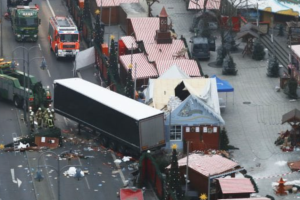First modification:
The director of the International Atomic Energy Agency, Rafael Grossi, revisited the Zaporizhia plant, the Ukrainian nuclear power plant under Russian control, and announced that it will deploy a permanent presence in the other three plants in the country. Meanwhile, the casualty count of Moscow’s attack on a residential building in Dnipro rose to 44.
Ukraine will soon enter its second year of war against Russia and one of the fears that hangs like a sword of Damocles over the country is its four nuclear plants and the possibility of the conflict affecting them.
Zaporizhia is the only one that, for now, is on the front line: since March 2022 it has been under the control of Russian troops and has been the target of several crossover attacks.
For this reason, for more than four months the International Atomic Energy Agency (IAEA) has maintained a continuous presence at the plant in order to control the safe operation of the facilities. Now this presence will be extended to the rest of the plants.
Rafael Grossi, general director of the entity, traveled to Zaporizhia this Tuesday, January 17, to announce that, starting next week, 12 nuclear safety experts will be at the Rivne, South Ukraine and Khmelnytskyy plants, in addition to the power station of Chernobyl, disabled since 1986 after the serious nuclear accident that still affects the region today.
“As this tragic war enters its second year, we must continue to do everything possible to avoid the danger of a serious nuclear accident that would cause even more suffering and destruction to the people of Ukraine and beyond,” Grossi said.
The IAEA’s goal is to reach an agreement between kyiv and Moscow to delimit a “safe zone” around Zaporizhia and thus reduce the risks of another accident. So far, no progress has been made.
“The situation around the plant is still very, very dangerous,” Grossi recalled. “My talks with Ukraine and Russia are progressing, although not as fast as they should be. I remain hopeful that soon we can agree and implement the zone,” he said.
At least 44 dead after attack in Dnipro
Less than 100 kilometers north of Zaporizhia, the death toll from an airstrike in the city of Dnipro rose to 44. A missile struck a residential building on Monday, killing dozens of civilians in one of the deadliest strikes ever witnessed by Moscow .
To this day, there are still 22 missing people, four of them minors. However, the emergency services ended the search tasks.
Among the fatalities, six were children. Rescue teams found 39 people alive, but 22 are still missing. In addition, the city authorities assure that 15 of the deceased people have not yet been able to be identified.

The Kremlin maintains that it is not responsible for the attack and maintains that its army is not targeting the civilian population. However, the missile model would correspond to those used by Russian troops.
In fact, this attack on Dnipro reveals the technical defensive deficiencies of Ukraine, which does not have equipment to shoot down or intercept this type of missile.
Ukraine asks to unblock shipment of German tanks
Precisely in order to reinforce Ukraine’s military capabilities, the Government maintained its insistence on Tuesday on the need to obtain more tanks that would allow them a greater offensive force and balance forces with the huge Russian Army.
At the center of the debate is a fleet of Leopard tanks, widely used and purchased by European armies. However, being German-made, authorization from Berlin is needed for the military vehicles to reach their destination.
Germany has been, since the start of the war, one of the most reticent European countries supporting kyiv to provide war materiel, even though it has progressively backed down, reversing decades of anti-war policy.
The indecision around issues of this caliber was one of the reasons that ended with the leadership of former Defense Minister Christine Lambrecht. Her successor, designated this Tuesday, Boris Pistorius, should be the one to resolve this situation.
Economy Minister Robert Habeck told local radio that this is the first issue on the agenda of Pistorius, a social democrat who comes from regional politics.
The UK went ahead and offered a dozen Challenger 2 tanks, adding to the pressure on Berlin. The Davos Forum, which is held in Switzerland, has also become a stage of support for Ukraine that redoubles the attention paid to Germany.
Polish President Andrzej Duda spoke these words: “We hope that the Leopard tanks will open a new chapter (in the Ukrainian war).”
All this, seasoned by the intervention in Davos by the Ukrainian first lady, Olena Zelenska, who maintains her role as ambassador for aid to kyiv and who, ironically, spoke of finding “a formula for peace.”
With EFE and Reuters












